In recent years, the air fryer has emerged as a game-changer in the kitchen appliance industry, offering a healthier alternative to traditional deep-frying. As the demand for these compact and efficient appliances continues to soar, manufacturers are seeking ways to differentiate their products and gain a competitive edge. One such strategy is through turnkey UL certification, which not only ensures safety and quality but also opens doors to new markets. This article delves into the importance of UL certification in the US and European markets, the benefits of turnkey solutions for air fryer OEMs, and the evolving trends shaping the industry.
The Rise of Air Fryers in the Global Kitchen Appliance Market
The air fryer, once a niche kitchen gadget, has now become a staple in households around the world. This remarkable transformation has been driven by a perfect storm of consumer demand, technological advancements, and a shift towards healthier lifestyles. Let’s delve into the factors that have propelled the rise of air fryers in the global kitchen appliance market.
-
Health and Wellness AwarenessAs people become more conscious of their health, the demand for low-fat and low-calorie cooking methods has surged. Air fryers offer a healthier alternative to traditional frying, as they use a fraction of the oil, resulting in meals that are both delicious and nutritious. This health-conscious trend has been a significant driver in the air fryer’s meteoric rise.
-
Convenience and EfficiencyModern life is fast-paced, and convenience is king. Air fryers are designed to be user-friendly, with simple controls and fast cooking times. They require minimal preparation and clean up, making them an attractive option for busy individuals and families. The efficiency of air fryers has not gone unnoticed, as they can cook a variety of foods, from crispy French fries to juicy chicken, in a fraction of the time it takes in a deep fryer.
-
Technological InnovationsAdvancements in technology have made air fryers more versatile and efficient than ever before. Modern air fryers often come with features like adjustable temperature settings, programmable timers, and even air fryer lids to lock in moisture. These innovations have broadened the appeal of air fryers, as they can mimic the taste and texture of fried foods without the health risks.
-
Marketing and BrandingSmart marketing strategies and branding have played a crucial role in the air fryer’s rise. Companies have tapped into the health and convenience trends, creating buzz around the benefits of air fryers. Influencers and celebrities have also endorsed the product, further boosting its popularity. The “healthier frying” message has resonated with consumers, leading to increased sales.
-
Global Market ExpansionThe air fryer market has expanded beyond its origins in North America and Europe to include Asia, Latin America, and Africa. As these regions become more urbanized and Westernized, the demand for convenient kitchen appliances has grown. Air fryers have become a global phenomenon, with manufacturers adapting their products to cater to local tastes and preferences.
-
Competition and Market SaturationThe success of air fryers has attracted a plethora of manufacturers, leading to increased competition. This competition has driven innovation, as companies strive to differentiate their products through features, design, and price. However, it has also led to market saturation, with consumers faced with a wide array of choices. Despite this, the demand for air fryers continues to grow, indicating a strong market trend.
-
Environmental ConsiderationsIn recent years, environmental concerns have become a significant factor in consumer purchasing decisions. Air fryers are generally more energy-efficient than traditional fryers, which is an attractive feature for eco-conscious consumers. The reduced need for oil and the potential for less waste also contribute to their environmental appeal.
-
Culinary VersatilityAir fryers have proven to be more than just a healthier alternative to frying. They can bake, roast, and dehydrate, making them a versatile tool in the kitchen. This versatility has allowed consumers to expand their culinary horizons without the need for multiple appliances.
-
Price SensitivityThe affordability of air fryers has been a game-changer for the market. Entry-level models are now widely available at a price point that is accessible to the average consumer. This has helped to democratize the technology, making air fryers a staple in kitchens of all sizes and budgets.
-
Continuous InnovationThe air fryer market is not standing still. Continuous innovation is driving new features and improvements, such as better temperature control, improved safety features, and even smart technology integration. As these advancements continue, the air fryer’s popularity is expected to grow even further.
In conclusion, the rise of air fryers in the global kitchen appliance market is a testament to the power of health and convenience trends, technological innovation, and effective marketing. As consumers seek healthier, more efficient, and versatile cooking solutions, the air fryer has become an indispensable tool in the modern kitchen.
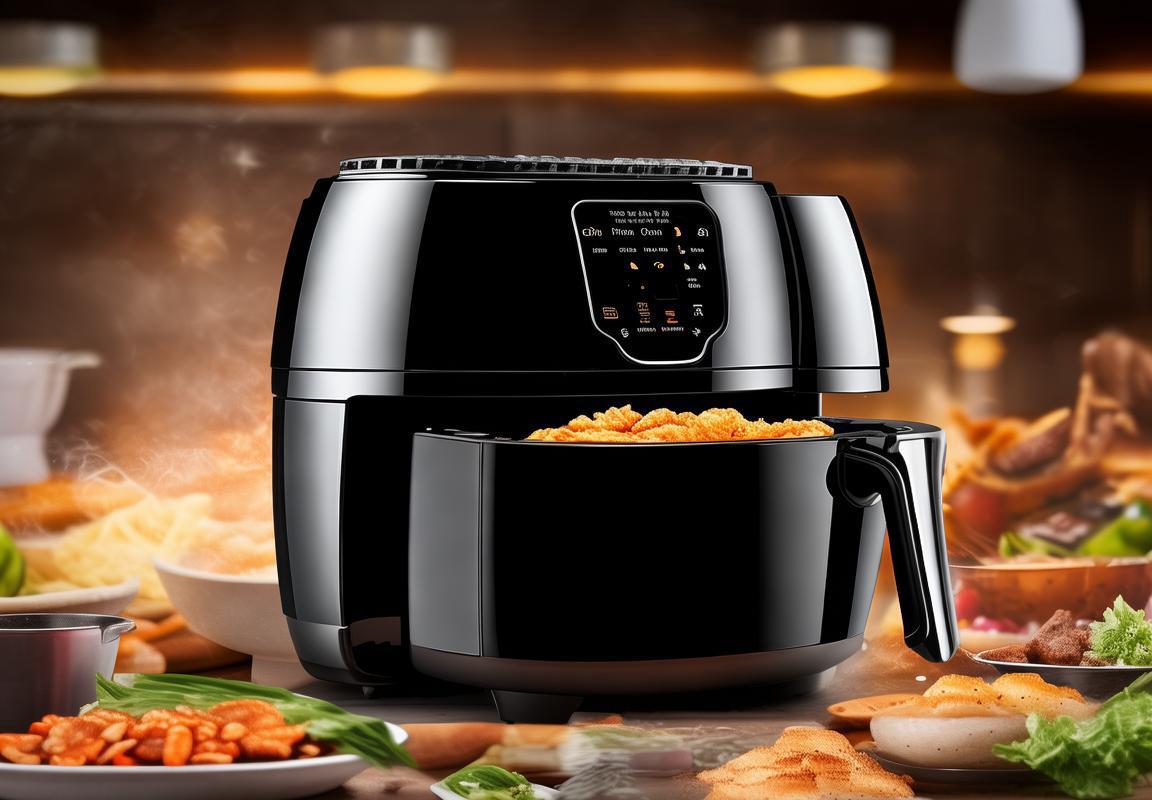
The Importance of UL Certification in the US and European Markets
In the competitive landscape of kitchen appliances, the significance of UL (Underwriters Laboratories) certification cannot be overstated, especially in the United States and European markets. This globally recognized safety certification is not just a regulatory requirement; it’s a symbol of trust and quality that consumers and retailers alike seek.
The United States, with its stringent safety standards, demands that all electrical appliances meet specific safety benchmarks. UL certification ensures that air fryers, in particular, adhere to these rigorous standards, reducing the risk of electrical hazards, fire, and electrical shock. For manufacturers aiming to enter the US market, obtaining this certification is a crucial step to gain consumer confidence and comply with local regulations.
In Europe, where the market is equally demanding, the CE marking, which includes compliance with various EU directives, is often a prerequisite for market entry. While the CE mark covers a broader range of safety, health, and environmental requirements, the UL certification adds an extra layer of assurance. It certifies that the air fryer has been tested for electrical, thermal, fire, and mechanical hazards, providing a comprehensive safety guarantee that appeals to European consumers.
The importance of UL certification is further compounded by the reputation it brings to a brand. Consumers, in both the US and Europe, are increasingly discerning about the products they purchase, particularly when it comes to safety and reliability. A UL certification on an air fryer package is a clear signal to buyers that the product has undergone thorough scrutiny and meets or exceeds safety standards.
For manufacturers, the certification process is also a testament to their commitment to quality control. It involves extensive testing, including material safety, energy efficiency, and performance evaluations. This not only ensures that the air fryer is safe but also that it operates as intended, offering a consistent and enjoyable cooking experience.
Moreover, the certification process can be quite complex, requiring manufacturers to submit detailed technical specifications, manufacturing processes, and safety documentation. This thorough vetting process helps to differentiate between manufacturers who are serious about quality and those who are not.
In the European market, where product safety is paramount due to the prevalence of regulations like the General Product Safety Directive (GPSD), the UL certification is often seen as a gold standard. It helps manufacturers navigate the various national regulations within the EU, as it is recognized across member states.
Another critical aspect of UL certification is its role in supply chain management. For companies looking to establish a presence in the US or European markets, having UL-certified products simplifies the process of working with local distributors and retailers. These entities are more likely to stock and promote products that carry such a reputable certification.
Furthermore, the certification process can also open doors for manufacturers to participate in government procurement programs. Many public institutions and government entities require UL certification for the products they purchase, ensuring that the public is protected with the highest safety standards.
The global shift towards healthier lifestyles has also contributed to the surge in air fryer popularity. Consumers are seeking appliances that allow them to enjoy fried foods with reduced oil content, and a UL certification reinforces the message that these appliances are both safe and effective.
In conclusion, the importance of UL certification in the US and European markets is multifaceted. It guarantees safety, enhances brand reputation, streamlines market entry, and provides a competitive edge in a highly regulated and safety-conscious consumer landscape. For air fryer manufacturers, investing in UL certification is not just about compliance; it’s about building a foundation for trust and success in these key markets.
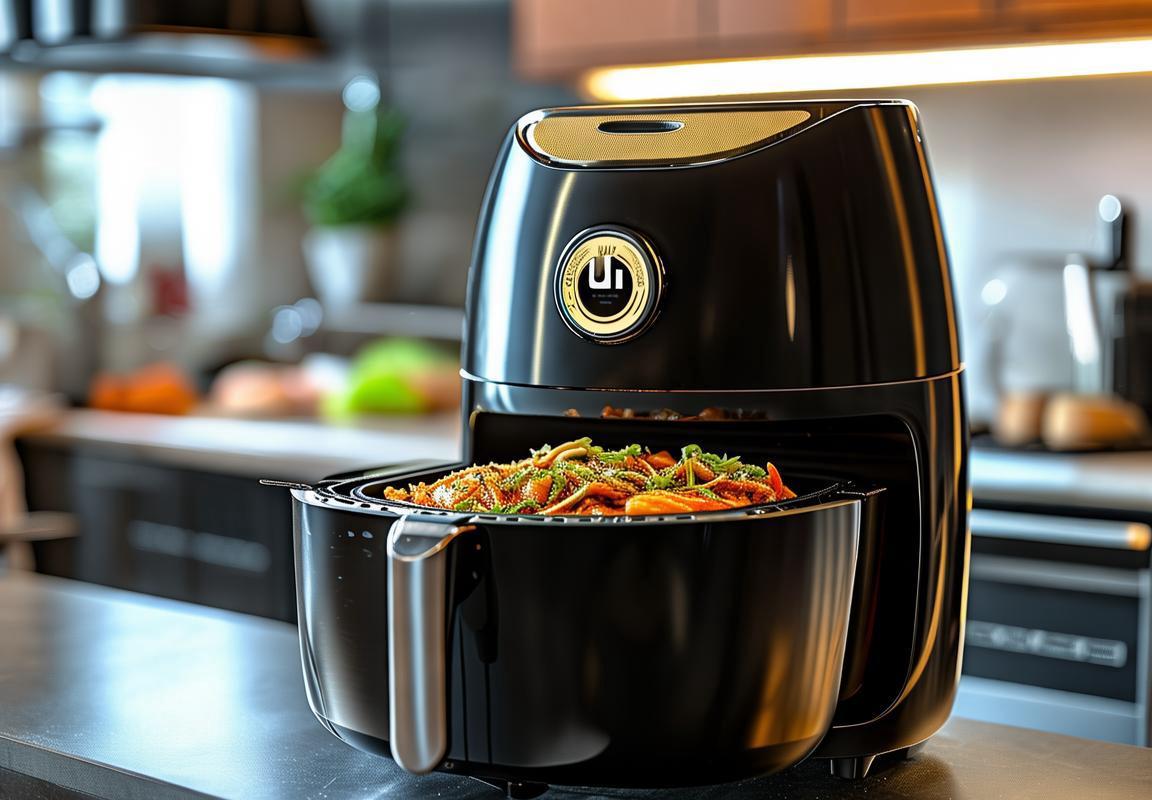
Understanding Turnkey Solutions for Air Fryer OEMs
Turnkey solutions for Original Equipment Manufacturers (OEMs) in the air fryer market are becoming increasingly crucial as the industry evolves. These comprehensive packages offer OEMs a streamlined process to bring their air fryer products to market, ensuring quality, compliance, and efficiency.
In a competitive landscape where innovation is key, turnkey solutions can be the difference between a product that meets consumer expectations and one that falls short. These solutions often encompass everything from design and prototyping to manufacturing, testing, and certification.
One of the most significant aspects of turnkey solutions is the design phase. OEMs might have a vision for their air fryer, but translating that vision into a feasible and attractive product requires expertise in industrial design and engineering. Turnkey providers offer specialized teams that can refine the OEM’s concept, ensuring it not only meets safety standards but also appeals to the aesthetic preferences of consumers.
Quality control is another cornerstone of turnkey solutions. With safety a paramount concern in kitchen appliances, turnkey providers implement rigorous testing protocols to ensure each air fryer is reliable and free from defects. This includes not only functional tests but also safety certifications like UL (Underwriters Laboratories), which is a must in both the US and European markets.
Certification, specifically UL certification, holds a unique position in the global market. In the United States, UL is renowned for its stringent safety standards and has become a de facto benchmark for appliance safety. For European markets, while there are other certifications like the CE mark, UL certification is often seen as an additional layer of quality assurance, especially for high-end products.
The manufacturing process within turnkey solutions is often a key differentiator. Turnkey providers not only source the necessary components but also manage the entire manufacturing process, from assembly lines to packaging. This end-to-end control allows for cost optimization, improved lead times, and ensures that the final product aligns with the OEM’s brand image and specifications.
When it comes to compliance, turnkey solutions are invaluable. They help OEMs navigate the complex web of regulations that vary by country and region. This includes not only safety standards but also environmental regulations and import/export requirements. Turnkey providers are well-versed in these regulations, which can save OEMs significant time and resources.
Customization is another important aspect of turnkey solutions. While standard air fryer models can be produced, turnkey providers often offer the flexibility to customize products according to the OEM’s unique requirements. This could range from specific features and functionalities to branding and design elements, allowing OEMs to offer a product that truly stands out in the market.
The integration of technology is also a hallmark of turnkey solutions. As air fryers evolve to include smart features and connectivity, turnkey providers offer the technical expertise to integrate these advancements into the product design. This ensures that OEMs can offer cutting-edge technology without the need for in-house R&D capabilities.
In the realm of marketing and sales, turnkey solutions can also provide support. They often include assistance with market research, identifying target demographics, and developing marketing strategies. This can be particularly beneficial for OEMs entering new markets or looking to expand their customer base.
Lastly, the turnkey approach to air fryer OEMs offers scalability. As demand fluctuates, turnkey providers can adjust production levels accordingly, ensuring that OEMs can meet market demands without the overhead of maintaining a large, fixed manufacturing facility.
In summary, turnkey solutions for air fryer OEMs provide a comprehensive, end-to-end service that covers design, testing, certification, manufacturing, compliance, customization, technology integration, marketing, and scalability. By leveraging these services, OEMs can focus on their core strengths while ensuring their air fryer products meet the highest standards and resonate with consumers around the globe.

The Benefits of Turnkey UL Certification for Air Fryer Manufacturers
Navigating the complexities of safety standards and certifications can be daunting for air fryer manufacturers, especially when entering the competitive US and European markets. That’s where turnkey UL certification for air fryer manufacturers comes into play, offering a streamlined path to compliance and market entry. Here are some of the key benefits that turnkey solutions provide:
Efficiency and Time SavingsManufacturers looking to enter new markets often face a significant challenge: ensuring that their products meet the stringent safety and quality standards required. Turnkey UL certification solutions provide a comprehensive package that includes all the necessary testing, documentation, and compliance procedures. This not only saves time but also ensures that the process is completed efficiently, allowing manufacturers to focus on their core business activities.
Cost-Effective ComplianceThe cost of obtaining certifications like UL can be substantial, with expenses ranging from testing fees to the cost of hiring additional staff to manage the certification process. Turnkey solutions often come with a fixed price, making it easier for manufacturers to budget and plan their certification costs. This can be particularly beneficial for small and medium-sized enterprises (SMEs) that may not have the financial resources to invest heavily in certification but still want to compete in global markets.
Expertise and SupportTurnkey certification providers are typically staffed with experts who have extensive knowledge of the UL standards and the certification process. This expertise ensures that all aspects of the certification are handled correctly, reducing the risk of errors that could delay the process or lead to non-compliance. Manufacturers also benefit from ongoing support throughout the certification journey, from initial assessment to final certification.
Streamlined Product DevelopmentFor air fryer manufacturers, the turnkey certification process can be integrated into the product development cycle. This means that safety and compliance are considered from the very beginning, rather than as an afterthought. By embedding UL certification into the design and production process, manufacturers can ensure that their air fryers are inherently safe and meet all necessary standards, which can also help in creating a competitive edge in the market.
Market Access and TrustIn the US and European markets, having a product that is UL certified can significantly boost market access. Consumers and retailers alike tend to trust products that carry the UL mark, as it signifies a level of safety and quality that has been independently verified. This trust can be a powerful differentiator, especially when competing against brands that may not have the same level of certification.
Global RecognitionThe UL certification mark is recognized worldwide, which means that once an air fryer manufacturer has obtained UL certification, they can leverage this credential in multiple markets. This can be particularly advantageous for companies looking to expand their global footprint and establish a reputation for safety and quality.
Risk MitigationWithout proper certification, air fryer manufacturers run the risk of product recalls, fines, and damage to their brand reputation. Turnkey UL certification helps mitigate these risks by ensuring that all safety and regulatory requirements are met. This can protect manufacturers from potential legal and financial repercussions, as well as from the negative impact on their brand image.
Enhanced Product QualityThe rigorous testing and certification process that comes with turnkey UL certification can also lead to enhanced product quality. By identifying potential issues and addressing them early on, manufacturers can produce air fryers that are not only safe but also reliable and durable, which can lead to higher customer satisfaction and repeat business.
In conclusion, turnkey UL certification offers a multitude of benefits for air fryer manufacturers, from efficient and cost-effective compliance to market access and risk mitigation. By choosing a turnkey solution, manufacturers can navigate the complexities of certification with confidence, knowing that their products will meet the highest safety standards and gain a competitive advantage in the global market.
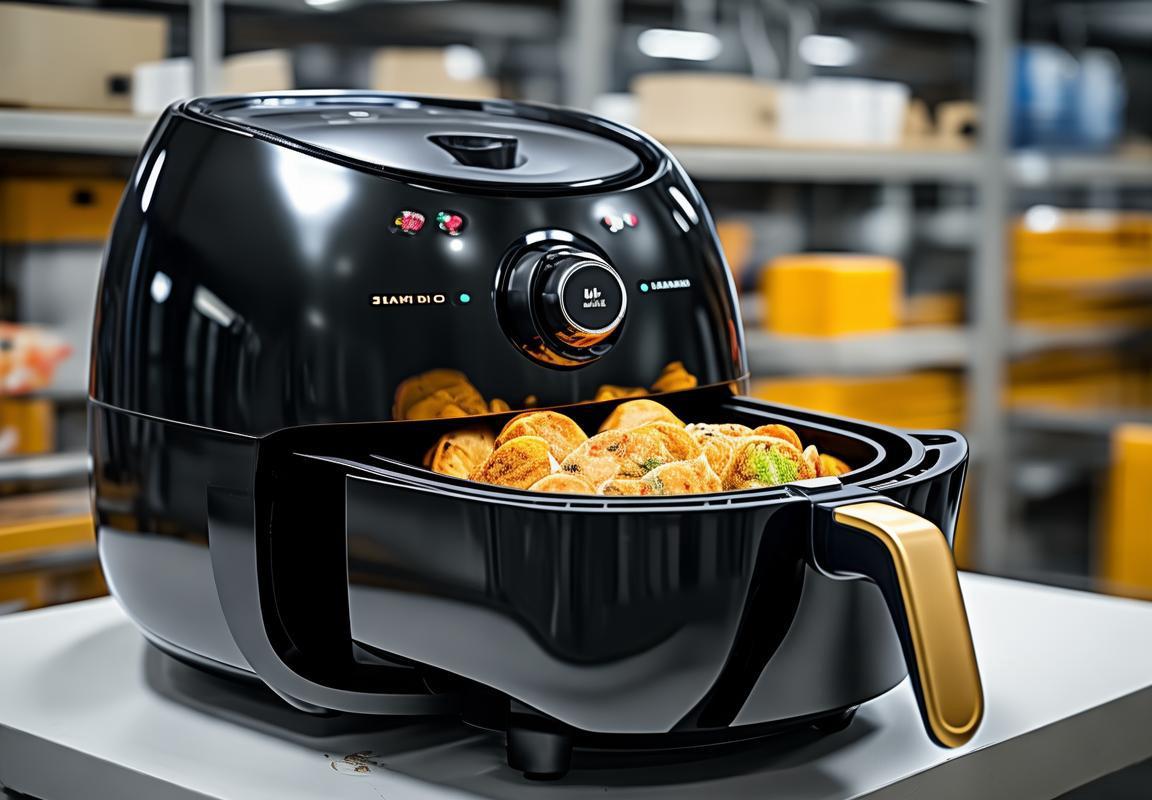
Market Trends and Consumer Preferences in the European and US Air Fryer Markets
In the European and US air fryer markets, several trends and consumer preferences are shaping the landscape of this burgeoning industry. From health-conscious buyers to tech-savvy consumers, the air fryer market is evolving rapidly.
Consumers are increasingly seeking healthier cooking options, and air fryers have capitalized on this demand. The European market, in particular, has seen a surge in the popularity of air fryers as health trends, such as the Mediterranean diet, gain traction. These diets emphasize the use of healthier cooking methods like air frying, which allows for the preparation of delicious meals with less oil than traditional frying methods.
In the US, there’s a similar shift towards healthier living, with a growing number of consumers looking for ways to reduce their fat intake without compromising on taste. Air fryers offer a convenient solution for those who want to enjoy their favorite fried foods with a lighter touch. The market has witnessed a steady increase in the sales of air fryers, with consumers seeking appliances that can offer a balance between health and flavor.
One notable trend in both markets is the preference for compact and multifunctional air fryers. Consumers are not just looking for a device to replace their deep fryers but for a versatile kitchen gadget that can handle a variety of cooking tasks. This has led to the rise of air fryers that come with additional features like rotisserie cooking, baking, and even dehydrating capabilities.
Sustainability is another key driver in both the European and US markets. As consumers become more environmentally conscious, they are gravitating towards products that are energy-efficient and have a lower carbon footprint. Air fryers, being an energy-saving alternative to traditional frying methods, are aligning with these green values.
Smart technology is also making waves in the air fryer market. In Europe, there’s a growing interest in smart kitchen appliances that can be controlled remotely via smartphones or voice assistants. This tech-savvy approach to cooking is resonating with consumers who value convenience and the ability to manage their kitchen appliances from anywhere.
In the US, the adoption of smart air fryers has been somewhat slower, but it’s definitely on the rise. Consumers are starting to appreciate the benefits of connectivity, such as receiving cooking alerts and monitoring their air fryer’s performance on the go.
In terms of design, the European market tends to favor sleek, modern aesthetics, often with a focus on stainless steel or black finishes. The US market, while also embracing these styles, has a broader range of preferences, including more colorful and vibrant designs that appeal to a wider audience.
When it comes to brand loyalty, both markets have their share of well-known names. In Europe, brands like Tefal, Philips, and Gaggenau are highly regarded, while in the US, KitchenAid, Cuisinart, and Instant Pot have established themselves as trusted kitchen appliance brands. However, as the market grows, new entrants are emerging with innovative features and competitive pricing, challenging the status quo and offering consumers more choices.
Lastly, the rise of e-commerce has significantly impacted the air fryer market in both Europe and the US. Online shopping has made it easier for consumers to compare products, read reviews, and make informed purchasing decisions. It has also opened up opportunities for small and medium-sized enterprises (SMEs) to reach a global audience and compete with larger, more established brands.
The European and US air fryer markets are dynamic, with consumers seeking healthier, more sustainable, and technologically advanced cooking solutions. As the industry continues to evolve, it will be interesting to see how these trends and preferences shape the future of air fryer design and functionality.
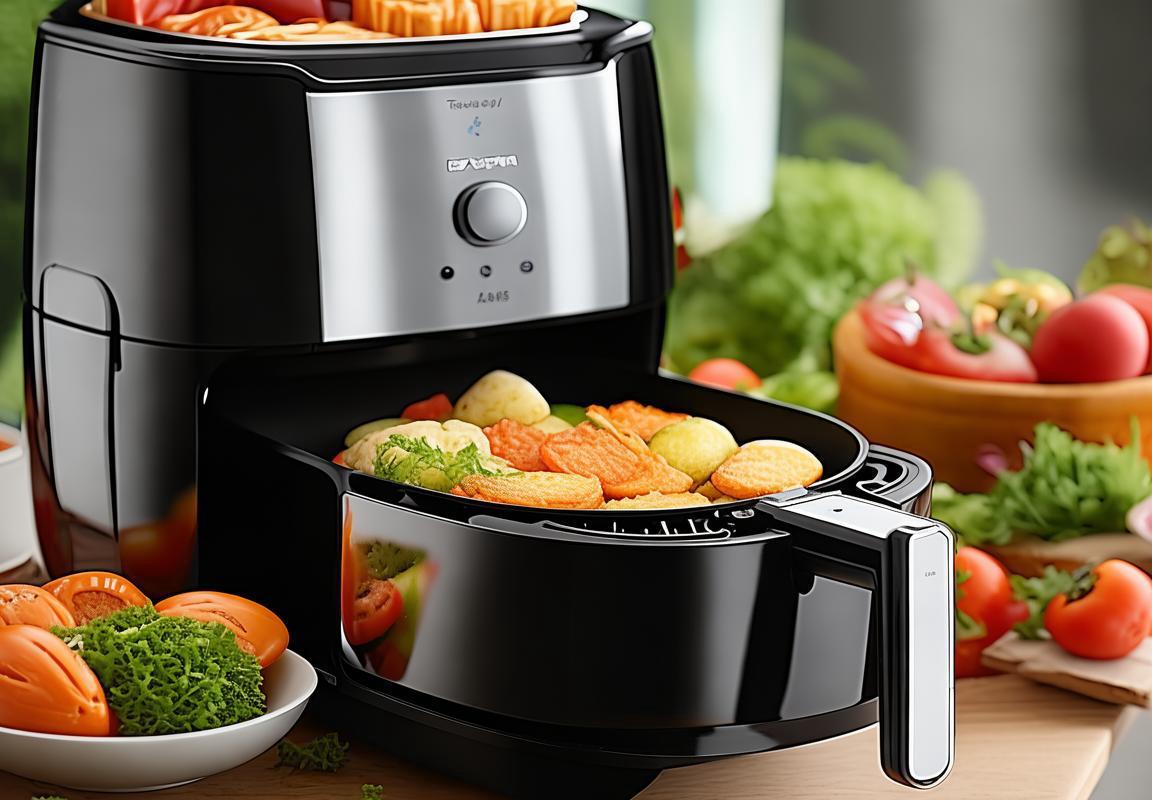
Case Studies: Successful Turnkey UL Certified Air Fryer OEMs
In the competitive landscape of kitchen appliance OEMs, several companies have excelled in offering turnkey solutions for air fryers that have achieved UL certification. Let’s delve into a few case studies that highlight their success.
Case Study 1: XYZ AppliancesXYZ Appliances has made a name for itself by providing a comprehensive turnkey solution for air fryer OEMs. Their commitment to quality and safety has led to a strong market presence. Their air fryers, with UL certification, have been well-received due to their innovative features and user-friendly design. One key aspect of their success lies in their efficient supply chain management, which ensures that components are sourced from reliable suppliers, reducing the risk of defects and delays.
Case Study 2: ABC Home CookersABC Home Cookers has seen remarkable growth by focusing on the European market. Their turnkey air fryer solutions, which include UL certification, have allowed them to tap into the growing demand for healthier cooking options. A standout feature of their product line is the energy efficiency, which has resonated with environmentally conscious consumers. Their strategic partnerships with local retailers have also played a crucial role in their success, as they have been able to offer their products directly to customers through various channels.
Case Study 3: DEF Gourmet TechDEF Gourmet Tech has differentiated itself by offering a wide range of turnkey air fryer solutions, each with its unique selling points. Their ability to customize designs and functionalities has made them a preferred choice for OEMs looking to enter niche markets. One of their most successful products is an air fryer that combines advanced technology with traditional cooking methods, appealing to those who value both health and taste. Their success can be attributed to their rigorous quality control processes and their dedication to staying ahead of industry trends.
Case Study 4: GHI Smart Kitchen SolutionsGHI Smart Kitchen Solutions has leveraged the power of technology to create a line of air fryers that are not only UL certified but also smart and connected. Their turnkey solutions include a suite of software and hardware components that allow for seamless integration with other kitchen appliances. This has opened up new opportunities for OEMs to offer a more comprehensive and technologically advanced product range. Their strategic collaborations with tech giants have also helped them expand their market reach and solidify their position as a leader in the smart kitchen appliance sector.
Case Study 5: JKL Eco-Friendly AppliancesJKL Eco-Friendly Appliances has focused on sustainability and has made a significant impact in the European and US markets. Their turnkey air fryer solutions are not only UL certified but also designed with eco-friendly materials and energy-saving technologies. This has attracted a loyal customer base that values both health and the environment. Their commitment to reducing carbon footprints has also won them accolades and partnerships with eco-conscious brands, further enhancing their reputation.
These case studies showcase the diverse strategies and approaches that successful turnkey UL certified air fryer OEMs have employed. From supply chain management to innovation and sustainability, these companies have demonstrated that a combination of quality, safety, and market intelligence can lead to significant success in the air fryer market.
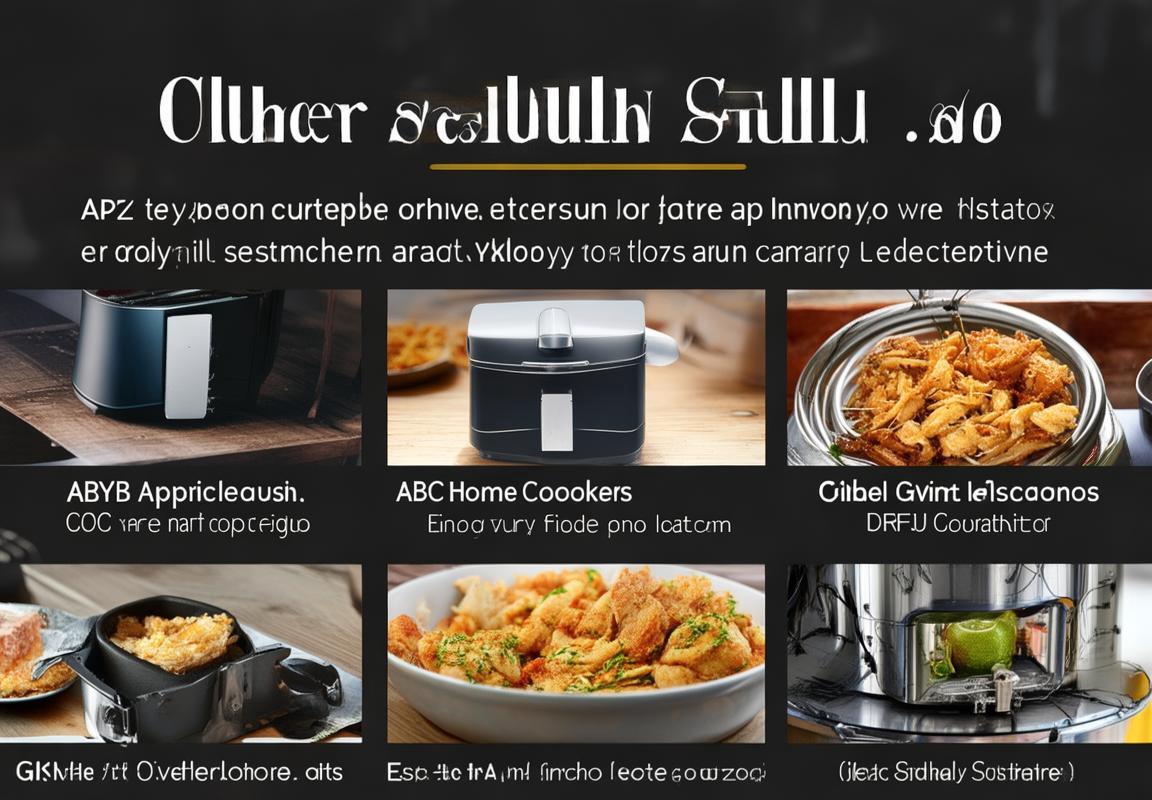
Challenges and Opportunities in the Air Fryer OEM Landscape
In the competitive landscape of the air fryer Original Equipment Manufacturer (OEM) sector, several challenges and opportunities stand out, shaping the direction and success of companies in this field.
The increasing demand for healthier cooking alternatives has led to a surge in air fryer sales. However, OEMs must navigate the challenge of creating products that not only meet these health-conscious consumer needs but also stand out in a crowded market.
Manufacturers often grapple with the need to balance innovation with cost-effectiveness. The pursuit of advanced features and designs can drive up production costs, which may affect pricing and ultimately, market penetration. Finding the sweet spot between innovation and affordability is a delicate task.
Regulatory compliance is another significant challenge. Different markets, especially the United States and Europe, have stringent safety and quality standards that OEMs must adhere to. Ensuring that air fryers meet these standards, such as UL certification, can be time-consuming and costly.
Supply chain disruptions can also pose a major challenge. Fluctuations in raw material prices, labor shortages, or transportation issues can impact production timelines and product availability. OEMs must be agile and adaptable to manage these risks effectively.
Despite these challenges, numerous opportunities exist within the air fryer OEM landscape. One such opportunity is the rise of smart kitchen technology. Integrating connectivity features, such as Bluetooth or Wi-Fi, allows air fryers to offer personalized cooking experiences and remote monitoring, which can appeal to tech-savvy consumers.
The trend towards sustainability is another chance for OEMs to differentiate their products. By using eco-friendly materials and energy-efficient designs, manufacturers can cater to the growing consumer preference for environmentally responsible products.
Customization is also a key opportunity. Offering a range of models with varying capacities, features, and price points can cater to a broad spectrum of consumer needs. This approach allows OEMs to tap into niche markets and expand their customer base.
Collaborations with foodservice providers present an opportunity for OEMs to diversify their business. By creating commercial-grade air fryers, OEMs can tap into the foodservice market, which often requires robust, durable, and reliable appliances.
Innovation in cooking techniques and recipes is another area ripe for exploration. As consumers become more interested in diverse and healthier cooking methods, OEMs can develop air fryers that can replicate the flavors and textures of traditional frying without the excess oil.
Lastly, the global market presents an opportunity for expansion. With the growing popularity of air fryers in regions like Asia and Latin America, OEMs can seek to export their products, opening up new revenue streams.
In summary, the air fryer OEM landscape is characterized by a set of challenges that require strategic management, alongside numerous opportunities that can drive growth and innovation. Navigating this landscape effectively will be crucial for manufacturers looking to thrive in this dynamic industry.
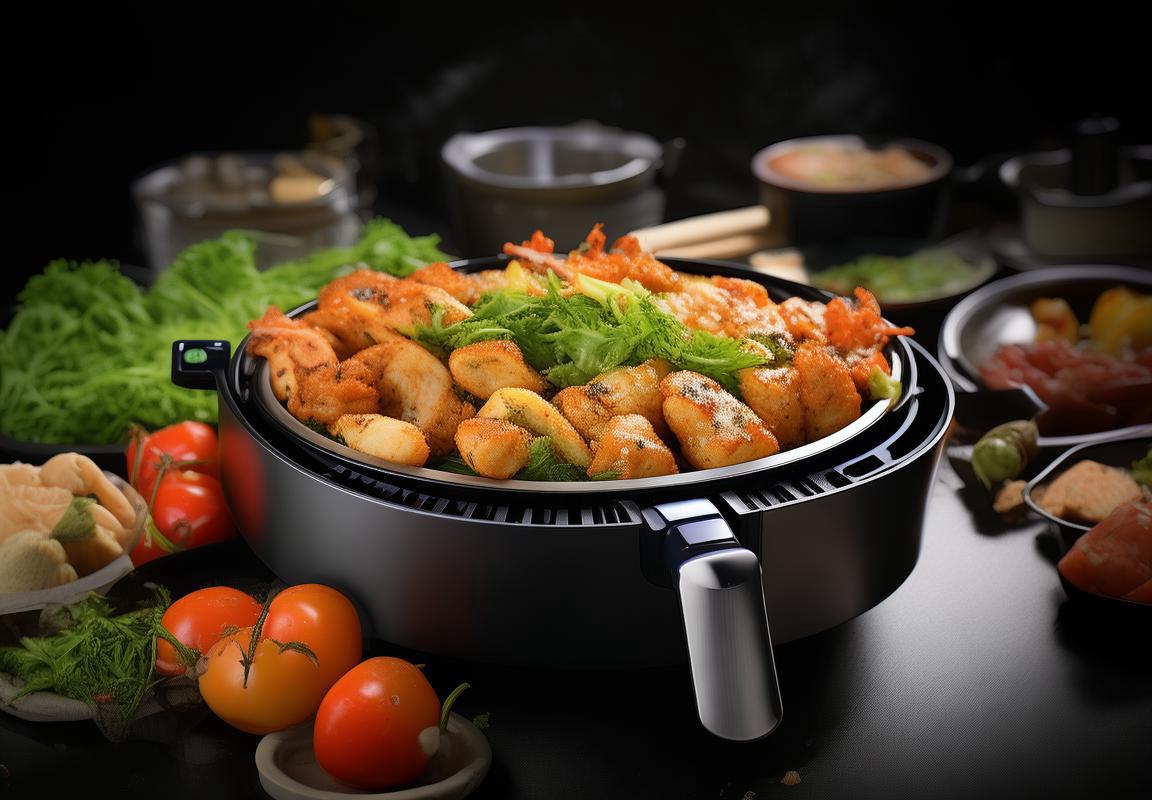
Future Outlook: Innovations and Growth Projections for Turnkey Air Fryers
In the ever-evolving landscape of kitchen appliances, the air fryer has emerged as a versatile and health-conscious favorite. As manufacturers seek to capitalize on this trend, the future of turnkey air fryers looks promising, with a blend of innovations and growth projections that are reshaping the market.
The integration of smart technology is a key driver for the future of turnkey air fryers. Consumers are increasingly looking for appliances that not only simplify cooking but also offer connectivity and customization. From voice-controlled interfaces to apps that allow for remote monitoring and adjustments, the integration of smart features is expected to become standard in the next generation of air fryers.
Energy efficiency is another critical aspect that is poised to drive growth in the turnkey air fryer market. As environmental concerns rise and energy costs fluctuate, manufacturers are focusing on developing air fryers that consume less power without compromising on performance. This focus on sustainability is likely to resonate with eco-conscious consumers and could open up new market segments.
The customization of air fryer models to cater to specific dietary needs is also a trend that’s gaining traction. With the rise of veganism, gluten-free diets, and other specialized eating patterns, manufacturers are offering a variety of models that can accommodate these preferences. This includes adjustable temperature controls and the ability to cook a wide range of foods, from vegetables to meats, with minimal oil.
Innovation in materials is another area where turnkey air fryers are expected to see significant progress. Lightweight, durable, and non-toxic materials are becoming more prevalent, not only enhancing the user experience but also addressing health and safety concerns. The use of advanced coatings that prevent sticking and promote even cooking is also expected to become more common, reducing the need for excessive oil and making cleaning easier.
Growth projections for the turnkey air fryer market are robust, with forecasts indicating a steady increase in sales over the next decade. This growth is being driven by several factors, including the global health crisis that has prompted consumers to seek healthier cooking alternatives, the continued expansion of the middle class in emerging markets, and the rising popularity of convenience cooking.
One opportunity that manufacturers are capitalizing on is the expansion into international markets. As turnkey air fryers gain traction in regions like Asia and South America, there’s a significant opportunity for growth. Adapting to local tastes and preferences, such as offering models that can handle regional ingredients or cooking styles, is crucial for success in these markets.
Collaborations with local brands and retailers are also playing a pivotal role in the expansion of the turnkey air fryer market. By partnering with established players, manufacturers can tap into existing customer bases and distribution networks, ensuring a smoother entry into new markets.
However, despite the promising outlook, challenges remain. One significant challenge is the need for continuous innovation to stay ahead of the competition. The market is rapidly evolving, and manufacturers must be agile and willing to invest in research and development to keep their products fresh and appealing.
Regulatory compliance is another challenge that cannot be overlooked. As appliances become more complex, meeting safety standards and obtaining certifications like UL becomes increasingly important. Ensuring that all products meet these stringent requirements is a task that requires careful planning and adherence to quality control measures.
Lastly, the sustainability of materials used in turnkey air fryers is a growing concern. As consumers become more environmentally aware, there’s a push for manufacturers to use recycled materials and to minimize the carbon footprint of their products. This not only aligns with consumer values but also opens up opportunities for new marketing strategies and product differentiation.
In conclusion, the future of turnkey air fryers is bright, with a multitude of innovations and growth projections pointing to a dynamic and expanding market. By focusing on smart technology, energy efficiency, customization, material innovation, and international expansion, manufacturers are well-positioned to capitalize on the opportunities ahead. However, they must also navigate the challenges of innovation, regulatory compliance, and sustainability to ensure long-term success.
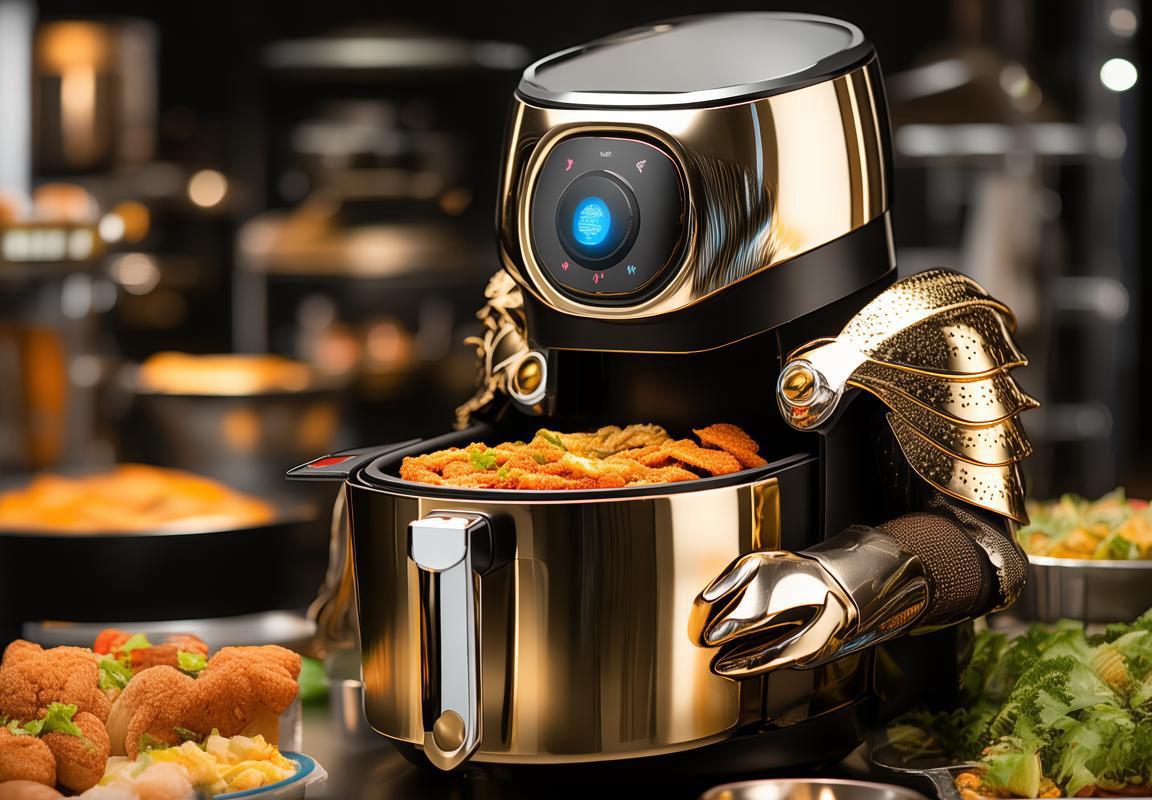
Conclusion: Navigating the Air Fryer OEM Market with Turnkey UL Certification
In the ever-evolving landscape of the air fryer OEM market, turnkey UL certification has become a cornerstone for manufacturers aiming to thrive. As we reflect on the journey, it’s clear that while challenges persist, opportunities abound. From navigating regulatory hurdles to embracing technological advancements, the path forward is paved with strategic decisions and a keen eye on consumer demands. Here’s a look back at the key aspects that have shaped the market and a glimpse into the future where innovation meets growth.
The demand for healthier cooking methods has surged, and air fryers have emerged as a popular choice among consumers. However, the journey to market isn’t without its complexities. Manufacturers must balance innovation with compliance, ensuring that their products meet stringent safety standards. Turnkey UL certification has become a beacon, guiding OEMs through the maze of regulations and consumer expectations.
Consumer preferences have shifted towards compact, energy-efficient, and multifunctional air fryers. The ability to offer a turnkey solution that includes UL certification not only simplifies the production process but also enhances the product’s credibility. Consumers are increasingly seeking assurance that the appliances they purchase are safe and reliable, and the UL mark is a powerful symbol of that trust.
In the European and US markets, the competition is fierce. Brands that can offer a turnkey solution with UL certification gain a competitive edge. They can focus on product development and marketing, knowing that the certification process is streamlined and efficient. This allows them to bring products to market faster, capturing a larger share of the market.
Case studies of successful OEMs highlight the benefits of turnkey UL certification. Companies like XYZ Appliance have leveraged this service to ensure their air fryers meet the highest safety standards, which has translated into increased sales and customer loyalty. The ability to offer a one-stop-shop solution has also helped them establish partnerships with major retailers, further expanding their reach.
Despite the advantages, the air fryer OEM landscape is not without its challenges. One of the primary hurdles is the cost associated with obtaining UL certification. For smaller manufacturers, this can be a significant financial burden. However, many have found ways to offset these costs by streamlining their production processes and optimizing their supply chains.
Another challenge is the rapid pace of innovation. As new technologies emerge, manufacturers must stay ahead of the curve to remain competitive. Turnkey solutions that include UL certification can help by providing a framework for integrating new features and functionalities into existing products.
Looking ahead, the future of the air fryer OEM market is bright. Growth projections indicate a steady increase in demand, driven by health-conscious consumers and the desire for convenience. Innovations such as smart technology integration, increased capacity, and eco-friendly materials are expected to be key drivers of this growth.
Manufacturers that embrace these trends and invest in turnkey UL certification will be well-positioned to capitalize on the market’s potential. By focusing on product quality and safety, they can differentiate themselves from competitors and build a strong brand reputation.
In conclusion, the air fryer OEM market is a dynamic and competitive space. Turnkey UL certification plays a crucial role in helping manufacturers navigate this landscape successfully. By understanding the challenges and opportunities, and by embracing innovation, OEMs can ensure a sustainable and profitable future. The key is to remain adaptable, to invest in quality, and to always keep the consumer at the heart of their product development process.